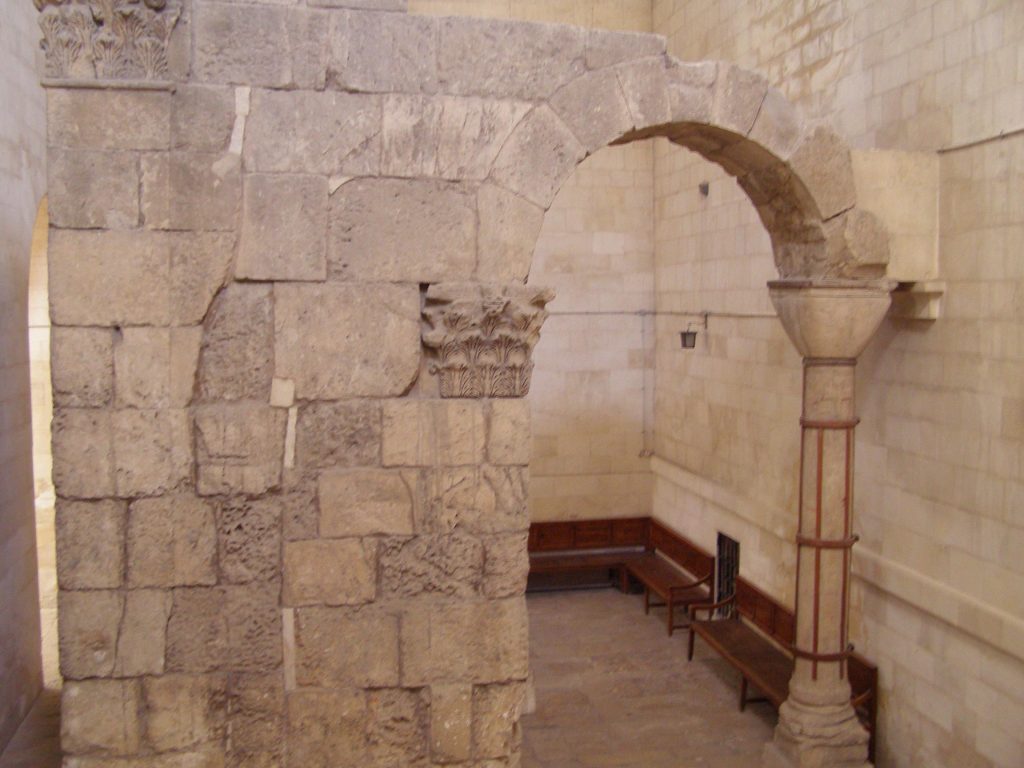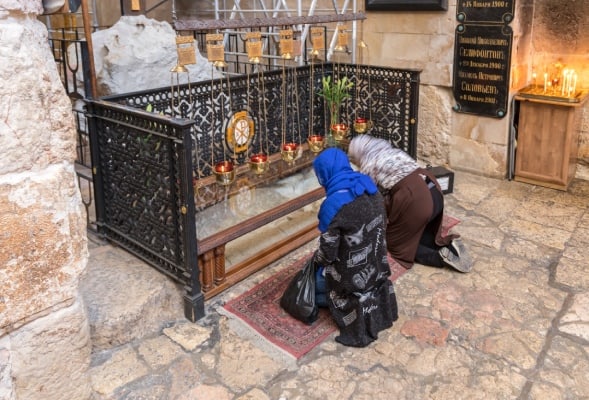Alexander Nevsky Church, a monastery and church located in the courtyard of Alexander in Jerusalem in the Christian Quarter of the Old City of Jerusalem, a few dozen meters from the Church of the Holy Sepulcher and opposite the northern entrance to the Church of the Redeemer. The monastery is named after Alexander Nevsky, a 13th-century Russian prince who invaded German and Swedish invaders from Russian soil. The monastery is located at the corner of Shuk Hatsaba’im and Beit Habad St. (Suk Khan a-Zeit), which extends to the Damascus Gate. The monastery is open (for a fee) to visitors.

More About Alexander Nevsky Church
The Alexander Nevsky Church was built on land purchased in 1857. The Russian government planned to establish a Russian consulate there. As part of the construction process, excavations were carried out in the church compound. The diggers hoped to find the second wall of Jerusalem from the end of the Second Temple period, through which Jesus passed to Golgotha Hill, where he was crucified. The second wall was not found in the excavations, but remains of an ancient gate were found. Finding the gate changed the plans of the Russians and led to the construction of a monastery in place of the originally planned consulate. The monastery was established in 1860 by the Russian-imperialist Russian-Orthodox society.

The Alexander Nevsky Churchy is a massive building built of pink marble and a red marble stone next to it, in an Ablaq technique. In other words, a type of construction that combines two shades of stones in front of the building also characterizes the Austrian Hospice in the Muslim Quarter, which was built around the same time. In recent years, the marble facade of the building has become obsolete due to layers of dirt that have accumulated on the church’s exterior walls. Inside the monastery is an antique hall from the second half of the 19th century.
A Roman Gate Found at the Church
The highlight of Alexander Nevsky Church is located below today’s street level; it includes an array of carefully carved stone walls and the remains of a staircase. The Russian Church identifies the finds as a gatehouse known as the “Judicial Gate” through which Jesus passed on his way to the crucifixion on Golgotha Hill, outside the city wall. On the other hand, archaeologists see the walls as part of the entrance to the Temple of Aphrodite from the Cardo. The walls date to the Aelia Capitoline period, built by the Roman emperor Hadrian. However, much of it is made of stones in the Herodian stonemasonry, as they claim to be of secondary use.

